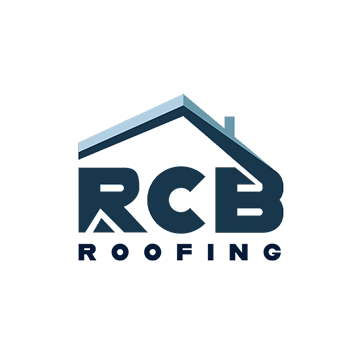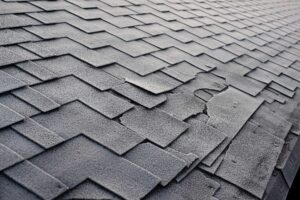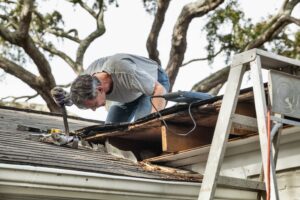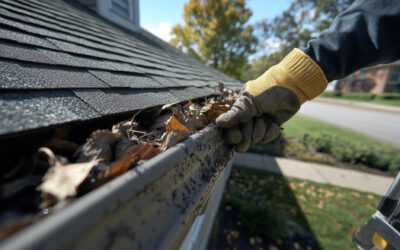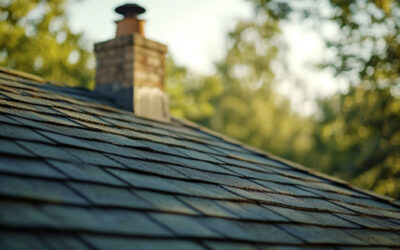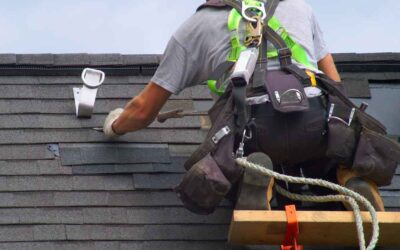Atlanta, Georgia, is no stranger to severe weather, including thunderstorms, heavy rains, and even occasional hailstorms. While these storms are common, they can take a toll on your roof, potentially leading to hidden damage that may worsen over time. To ensure the long-term health of your roof and avoid costly repairs down the line, it’s crucial to conduct a post-storm roof health check. Here’s a comprehensive checklist for Atlanta homeowners to follow:
Safety First
Before you begin your roof inspection, prioritize safety. Storm damage can create hazards, and climbing onto your roof can be risky. Always follow these safety precautions:
- Wait for Clear Skies: Don’t attempt an inspection while it’s still raining or immediately after a storm. Wait until conditions are safe.
- Use Proper Equipment: If you need to access your roof, use a sturdy ladder and wear appropriate footwear with good traction.
- Buddy System: Whenever possible, have someone with you during the inspection to assist or call for help in case of an emergency.
Exterior Roof Inspection
Start with a visual inspection of your roof’s exterior. Look for the following signs of damage:
1. Missing or Damaged Shingles:
Check for shingles that are curled, cracked, or missing. Damaged shingles can lead to water leaks and further roof deterioration.
2. Dented or Pitted Metal Components:
If you have a metal roof or components such as flashing and vents, inspect them for dents or pits caused by hail. These can compromise the roof’s integrity.
3. Debris Buildup:
Remove any debris like leaves, branches, or loose roofing materials from your roof and gutters. Accumulated debris can block drainage and cause water damage.
4. Flashing and Seals:
Examine the flashing around roof penetrations like chimneys, vents, and skylights. Ensure seals are intact to prevent water infiltration.
Interior Roof Inspection
Once you’ve assessed the exterior, move inside your home to check for interior signs of roof damage:
1. Ceiling Stains:
Look for water stains or discoloration on your ceilings and walls. These can indicate leaks in the roof.
2. Attic Inspection:
If accessible, examine your attic for signs of water infiltration, such as wet insulation, mold, or water drips. Ensure there are no visible holes or gaps in the roof structure.
3. Check for Leaks:
During or immediately after a storm, pay attention to any water leaks or dripping sounds. These are obvious signs of roof damage that require immediate attention.
Professional Inspection
While a DIY inspection is essential, some damage may not be visible to the untrained eye. To ensure a thorough assessment of your roof’s condition, it’s advisable to schedule a professional inspection with a trusted roofing contractor like RCB Roofing.
Professional roofers have the expertise and experience to identify hidden damage, assess the overall health of your roof, and recommend necessary roof repairs or replacements. Regular professional inspections can catch problems early, potentially saving you from costly repairs in the future.
Document and Insurance Claims
If you discover damage during your inspection, document it with photographs and detailed notes. This documentation will be essential when filing an insurance claim if your policy covers the storm damage.
When filing a claim, it’s crucial to act promptly. Contact your insurance provider to report the damage and follow their instructions for filing a claim. Your roofing contractor can also provide valuable assistance during this process, including providing estimates and working with your insurance adjuster.
Repairs and Maintenance
Once you’ve assessed the damage and filed a claim (if necessary), schedule timely repairs to address any issues. Prompt repairs can prevent further damage and extend the life of your roof.
Routine roof maintenance is also essential for preventing storm damage in the future. Regularly clean gutters and downspouts, trim overhanging tree branches and have your roof professionally inspected at least once a year.
Following this post-storm roof health checklist and partnering with a reputable roofing contractor in Atlanta like RCB Roofing, Atlanta homeowners can protect their homes and ensure their roofs withstand the challenges of Georgia’s ever-changing weather. Remember, a proactive approach to roof care can save you both time and money in the long run, providing peace of mind when the next storm rolls in.
